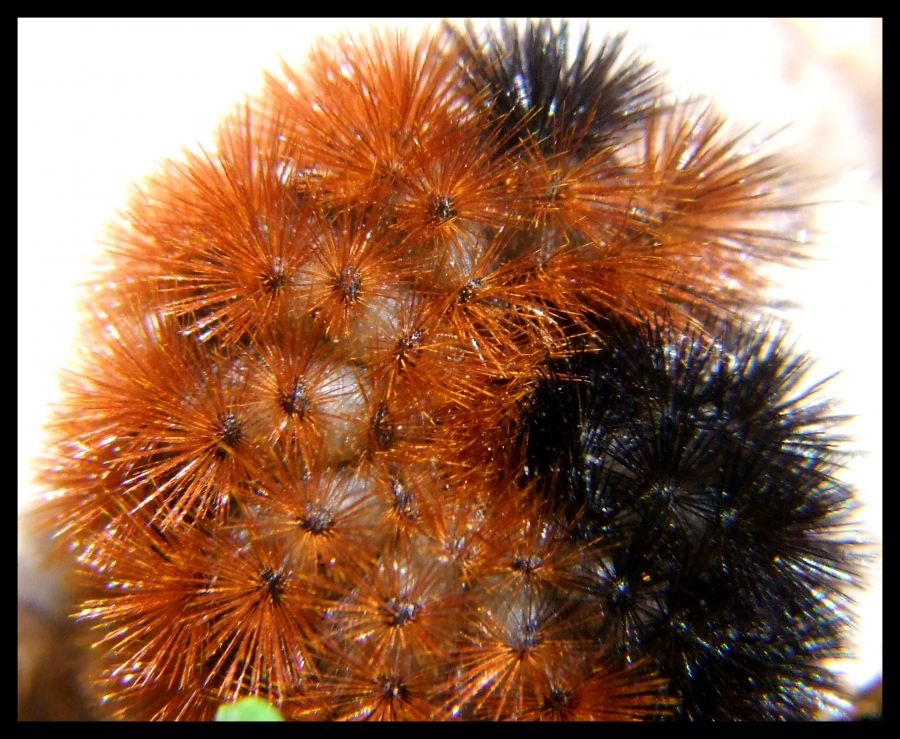Adaptation
Perhaps one of Pyrrharctia isabella's most interesting adaptations is its ability to survive subfreezing temperatures as it overwinters in its larval form. To achieve this, the caterpillar's body and organs freeze, starting with its heart. During late fall (depending on the particular habitat) the caterpillar will induce cyroprotectant synthesis by simultaneously increasing hemolymph osmolarity (by increasing its accumulation of sugars) and by acclimating to the cold (Kuharsky 2000). Due to this cryoprotectant in its tissues, the woolly bear is able to withstand tissue damage associated with freezing.

Yet, the woolly bear faces challenges when presented with repeated freeze-thaw bouts. Repeated freezing-thawing increases its mortality rate by nearly 30% and increases tissue damage in hemocytes and Malpighian tubules (a special excretory and osmoregulatory system found in many insects). (Marshall 2011).
Another interesting adaptation is the caterpillar's bristles. Although
its bristles are
 typically not urticant
as commonly believed, they may cause dermatitis in people with sensitive skin. (Encyclopedia
of Life 2013).
Another defense mechanism for the caterpillar is its tendency to curl
up in a tight ball when threatened or handled. This protects its
vulnerable underside and makes it appear more menacing to predators.
typically not urticant
as commonly believed, they may cause dermatitis in people with sensitive skin. (Encyclopedia
of Life 2013).
Another defense mechanism for the caterpillar is its tendency to curl
up in a tight ball when threatened or handled. This protects its
vulnerable underside and makes it appear more menacing to predators.
Learn about Pyrraharctia isabella's Nutrition.
Go to Home page.